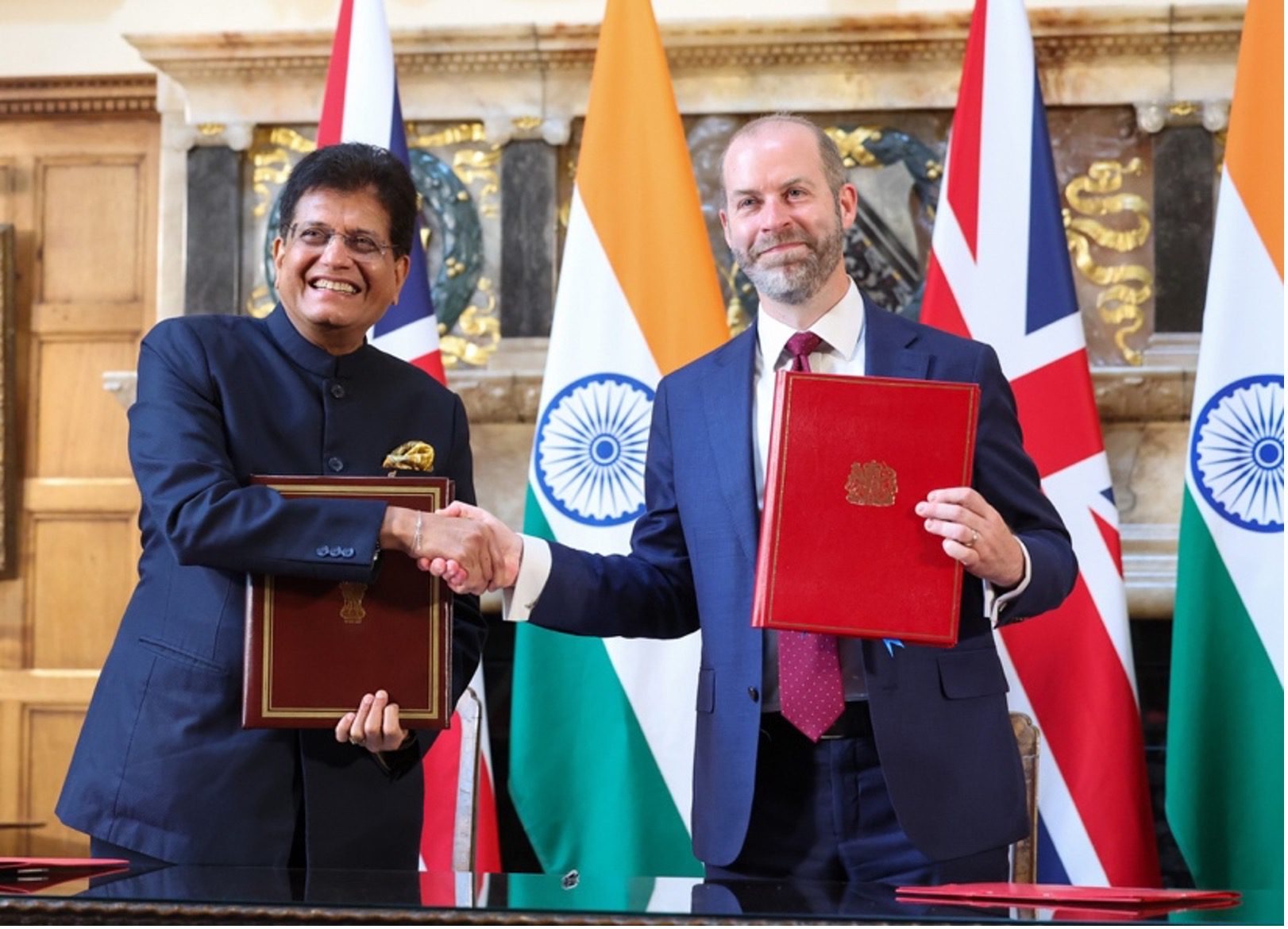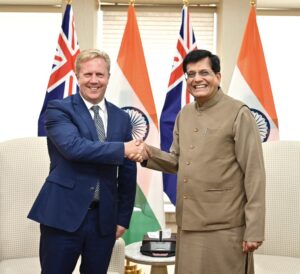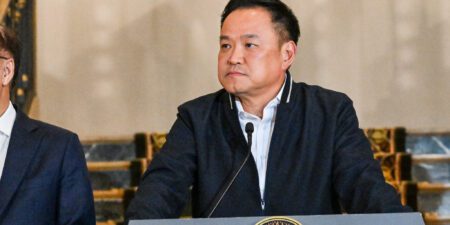
India-UK Trade Deal Advances Delhi’s Manufacturing and Supply Chain and Strategy

The BGA India team, led by Managing Director Anuj Gupta, wrote an update on the signing of a historic trade deal between India and the United Kingdom.
Prime Minister Narendra Modi concluded a two-day official visit to the United Kingdom from July 23-24, resulting in the signing of the Comprehensive Economic and Trade Agreement (CETA). The agreement advances India’s ongoing trade policy pivot to the West and high-income economies and efforts to position itself as a reliable supply chain partner.
Commerce and Industry Minister Piyush Goyal and his British counterpart Jonathan Reynolds signed the CETA in the presence of Modi and U.K. Prime Minister Keir Starmer. CETA has been approved by India’s Cabinet but requires ratification by the British Parliament before taking effect. Implementation of the deal is expected to take about a year.
Context
- Described as “ambitious and mutually beneficial” and hailed as the biggest deal the United Kingdom has signed since Brexit, the deal is expected to boost bilateral trade by $34 billion annually. Over the course of the next 10 years, India will cut the average tariff for U.K. goods from 15 percent to 3 percent. The United Kingdom will provide duty-free access to India’s labor-intensive exports and certain other sectors such as engineering goods, culminating with the implementation of India-U.K. Vision 2035 to exponentially expand bilateral commercial opportunities.
- Indian exports of toys, footwear, textiles, pharmaceuticals, processed food and marine products will benefit from zero-duty access, and engineering goods, auto parts, plastics and organic chemicals, gems and jewelry will receive a boost from further duty reductions. U.K. companies across alcoholic beverages (whisky and gin); automobiles, including electric vehicles; meat (lamb and salmon); cosmetics; machinery; electrical circuits; and medical devices can benefit from increased market access into India. CETA also opens up technology-enabled service economy for Indian businesses with dealings in information technology and information technology-enabled services, fintech, global capability centers and artificial intelligence (AI).
Significance
- CETA is fundamentally shaped by substantial tariff concessions, with the United Kingdom committing to eliminate tariffs on 99 percent of its tariff lines, covering nearly 100 percent of Indian exports. This marks a significant leap from the United Kingdom’s current most-favored nation regime, which offers duty free access to only 39 percent of agricultural and 55 percent of nonagricultural items.
- India has agreed to eliminate tariffs on 85 percent of its tariff lines, with an additional 5 percent subject to phased reductions. This provides U.K. products with market access on approximately 90 of its tariff lines.
- India has retained a sensitive list covering 10 percent of its tariff lines, which are excluded from concessions. These include dairy products, sugar and milled rice, apples, edible oil, cheese and other strategically protected items.
- Under the market access offer, the United Kingdom has offered 137 sub-sectors, and India has offered 108 sub-sectors. CETA aims to double the bilateral trade from $60 billion in 2024 to $120 billion by 2030.
- CETA significantly liberalizes trade in services, covering 36 sectors under contractual service suppliers and 16 under independent professionals. These include fields such as information technology, research and development, culinary arts, yoga and creative industries.
- CETA simplified social security norms under the double contribution convention, which will prevent double payments and administrative burdens on both employees and employers who plan to send workers to either country temporarily for up to 36 months. This will yield significant financial gains for Indian service providers and improve their competitive edge in the U.K. market.
- It also opens new opportunities for contractors and independent professionals in service sector by easing mobility through simplified visa procedures and liberalized entry criteria between the two countries, expanding the scope of talent transfers.
Implications
- Digital trade and technology have also emerged as key focus areas in the CETA as both sides reduce barriers to digital trade and promote the compatibility of their digital trading systems, reflecting the sector’s growing importance to both economies.
- Key takeaways include safeguarding businesses against the forced disclosure of proprietary source code,provided they meet India’s national standards. This allows the United Kingdom to negotiate on data flow and localization rules and maintain its data protection standards for cross-border data transfers.
- India has granted the United Kingdom enhanced access to its government procurement market under CETA. U.K. businesses and companies will now be eligible to bid for a wide range of contracts across most central government departments and public sector entities, opening the door to around 40,000 tenders annually valued at approximately $50 billion.
- For Indian companies, the Carbon Border Adjustment Mechanism will not apply under the CETA, alleviating concerns about exports to the United Kingdom.
- CETA unlocks new avenues for foreign direct investment into India, particularly across engineering goods, electric vehicle infrastructure, battery technology, solar and hydrogen. While labor-intensive exports are poised to gain a competitive edge, substantially boosting employment opportunities in India, the United Kingdom expects about $8.1 billion in Indian investments to create more than 2,200 jobs, reflecting the agreement’s win-win potential for both economies.
- Moving forward, India is likely to position the CETA framework as its gold standard for future trade negotiations.
Please see the annex below for a list of sectoral benefits under CETA. If you have questions or comments, please contact BGA India Managing Director Anuj Gupta at agupta@bowergroupasia.com.
Best regards,
BGA India Team
Annex
Sectoral Benefits Under CETA
| Sectors | Key Benefits |
| IT/ITES | Commitments by United Kingdom to Indian companies investing in computer and related services to enhance export potential for Indian information technology and information technology-enabled services companies. Access to India’s cost-competitive information technology skills in areas like digital transformation and cloud services. Ease of mobility facilitating dynamic collaboration on technology and innovation. |
| Global Capability Centers | U.K. companies likely to accelerate their approach to India from a cost-effective back office to a strategic partner for research and development, analytics, cybersecurity and emerging tech solutions. |
| Financial Services | Greater U.K. investment in fast-growing Indian market to bring in new, innovative and competitive financial services to benefit customers of financial services and broader digital economy. Indian financial services suppliers likely to expand their footprint, enhance their competitiveness and serve the Indian diaspora and businesses in the United Kingdom. Likely gains for electronic payments, fintech, financial diversity, stability and market integration. |
| Health and Education | Complimentary skills and cost effective access to medical facilities and professionals will spur opportunities in pharmaceuticals (Indian generics), health care technology and innovation. Opportunities for Indian education technology industry to offer customized services and improve educational experience and service delivery, while U.K. academic institutions will be able to set up campuses in India. |
| Labor Intensive Sectors and Industrial Goods | Zero-duty access and preferential access to the U.K. market over other competing export destinations across toys, leather, footwear, sports goods, textiles, processed food and marine products and gems and jewelry. Further penetration of pharmaceuticals, auto parts, organic chemicals, engineering goods, plastics through lower tariff rates than most-favored nation rates. |
| Digital Trade | Cooperation on cybersecurity frameworks and exchange of malware information. Development of governance and policy frameworks for emerging technologies such as AI, distributed ledger technologies, quantum, immersive and sensing technologies, digital twins and Internet of Things. Digital inclusion to improve level playing field for women and small and medium-sized enterprises as well as promote social and economic development and poverty reduction. Ease of doing digital trade through mechanisms such as online invoicing, data innovation, open government data and online consumer protection. |
| Agriculture | 95 percent of agricultural and processed food tariff lines will attract zero duties. These include fruits, vegetables, cereals, turmeric, pepper, cardamom and processed goods like ready-to-eat food, mango pulp, pickles, pulses and marine products. India gets access to the United Kingdom’s premium consumer markets. |
| Improved Indian Market Access for U.K. | Alcoholic beverages (whisky and gin) and meat (lamb and salmon). Automobiles, including electric vehicles, and industrial goods such as electrical circuits and machinery. Cosmetics. |

Anuj Gupta
Managing Director






















